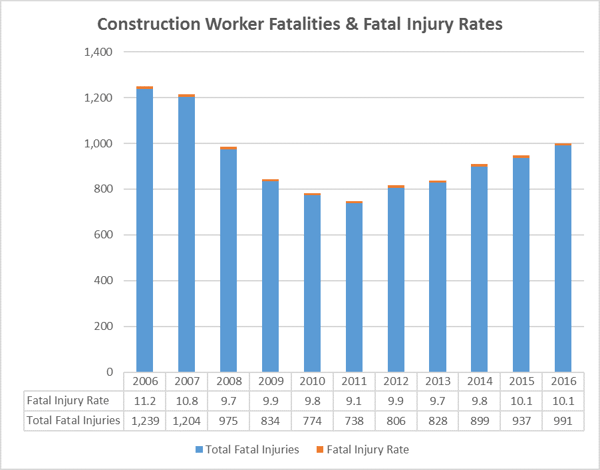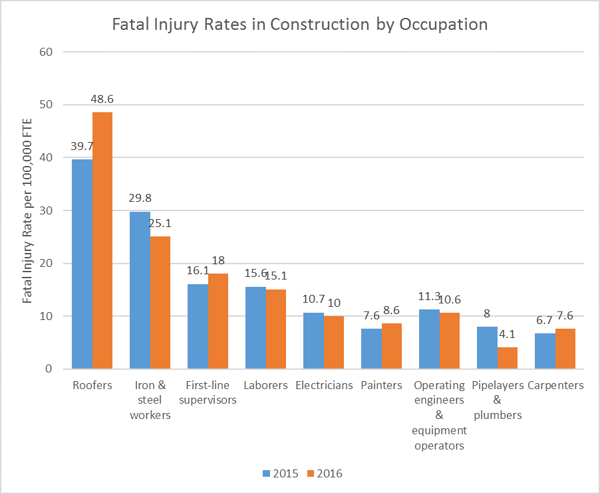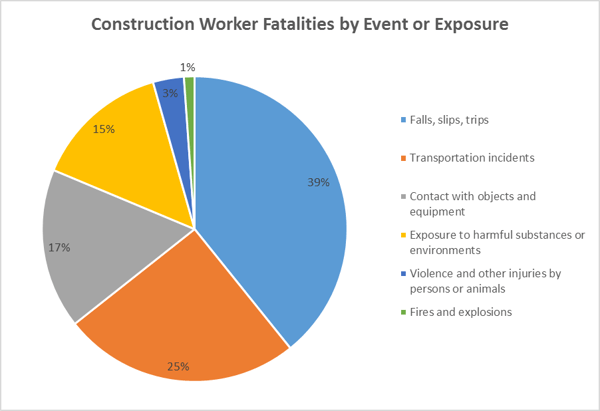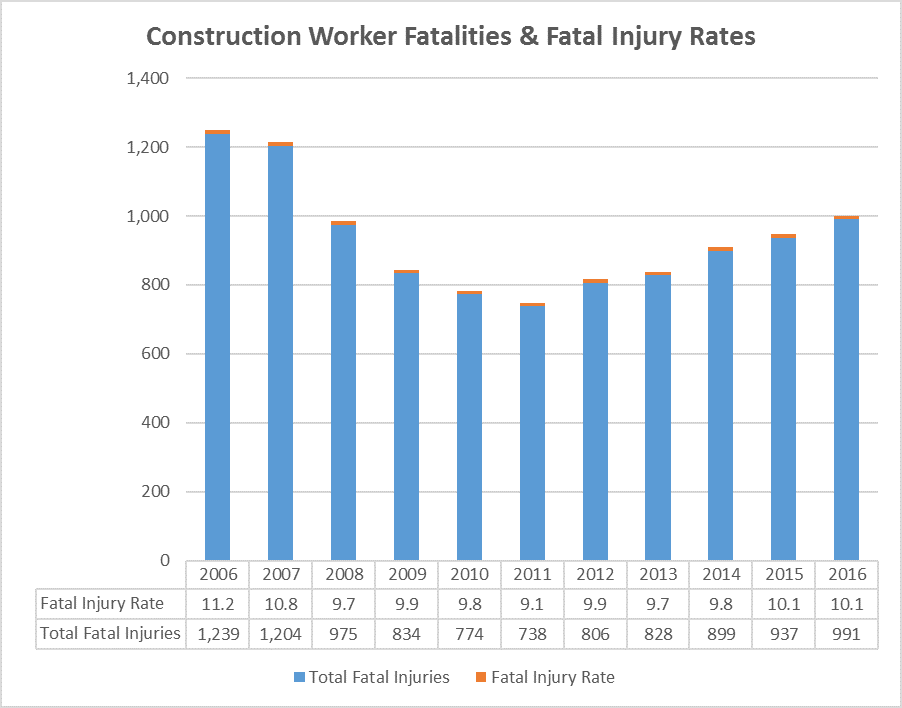Construction Worker Deaths Up 6% in 2016
Construction industry fatalities rose 6% from 2015 to 2016, according to the 2016 Census of Fatal Occupational Injuries (CFOI) from the Bureau of Labor Statistics (BLS) released yesterday. The construction industry again had the highest number of fatalities in all industries with 991 worker deaths. The construction industry represented 19.9% of all worker deaths in 2016 and 22.2% of all private industry worker deaths.
The fatal injury rate 100,000 full-time equivalent (FTE) workers in the construction industry remained at 10.1 in 2016. For all workers, the fatal injury rate increased from 3.4 in 2015 to 3.6 in 2016.

Despite accounting for the highest total of worker deaths, the construction industry was tied for third highest fatal injury rates among all industries. Agriculture, forestry, fishing and hunting had a fatal injury rate of 23.2 per 100,000 FTE followed by transportation and warehousing at 14.1 and mining, quarrying, and oil and gas extraction at 10.1.
The Five Deadliest Jobs in 2016 (by fatal work injury rates):
- Logging workers – 135.9 fatal injuries per 100,000 FTE workers
- Fishers and related fishing workers – 86.0
- Aircraft pilot and flight engineers – 55.5
- Roofers – 48.6
- Refuse and recyclable material collectors – 34.1
These were the same occupations that claimed the top five spots in 2015. Only refuse and recyclable material collectors saw a decrease in fatal injury rates in 2016, all other increased.
Structural iron and steel workers in construction were sixth on the list with a fatal injury rate of 25.1, accounting for 16 worker deaths in 2016. Other occupations in construction with high fatal injury rates include first-line supervisors of construction trades and extraction workers (134 deaths) at 18.0 and construction laborers (254 deaths) at 15.1.
Construction Worker Deaths by Fatal Injury Rates
Many occupations in construction saw a decrease in fatal injury rates in 2016. Structural iron and steel workers dropped from 29.8 to 25.1, construction laborers dropped from 15.6 to 15.1 and electricians dropped from 10.7 to 10.0. Operating engineers and construction equipment operators decreased from 11.3 to 10.6 and pipelayers and plumbers fell from 8.0 to 4.1.
Occupations that saw an increase in fatal injury rates in 2016 include roofers going from 39.7 to 48.6 and first-line supervisors increasing from 16.1 to 18.0. Carpenters rose from 6.7 to 7.6 and painters increased from 7.6 to 8.6.

OSHA’s Fatal Four
In the construction industry, the four leading causes of worker deaths not involving highway collisions were falls, being struck by objects, electrocutions and getting caught-in/between objects. OSHA has dubbed these the Fatal Four as they were responsible for 63.7% of all construction worker deaths in 2016.
Falls - 384 out of 991 total construction worker deaths in 2015 (38.7%)
Struck by Object - 93 (9.4%)
Electrocutions – 82 (8.3%)
Caught-in/between - 72 (7.3%)
There was an increase in total construction worker deaths for each of the Fatal Four in 2016.
The other leading cause of construction worker deaths is transportation incidents which accounted for 246 fatalities in 2016.

The total number of construction worker deaths have steadily increased the past few years. A very small number of construction deaths are the result of true accidents. The industry needs to do more to curb this increasing trend by creating and promoting a safe work environment. Improving construction worker safety is the only way to reduce these numbers and protect all workers.
